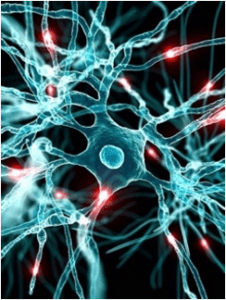Three Facts Every Parent Should Know
 By Dr. S. H. Jacob
By Dr. S. H. Jacob
www.shjacob.io
Author, Your Baby’s Brain, Intellect, and You
Content Writer, SmartBabies App

Over the past decade or two, much research has been done into early brain growth and how it affects the intellectual development of young children. Sifting through this massive knowledge, one is struck by three supremely important facts that every parent should know.
First, the first 2 years are the most important in your child’s development and set the foundation for everything to follow.
There is no more critical time in human intellectual development. Intellectual growth is nearly complete before a child enters school. Intellectual growth is nearly complete before a child enters school.
Intellectual growth is truly unparalleled in the early years. One is left 
in awe as to the explosive nature of its growth. The figure on the right shows how quickly the synapses (connections between brain cells) form. Once born, a baby’s brain grows faster in their first two years than at any other time of their lifetime. By the age of 3, her brain forms approximately 1000 trillion brain cell connections! This means that the experiences a child has in these early years will impact his mind for the rest of her life.
Consider these facts:
- Changes in the structure of the brain affect how one functions. And how one functions forces brain structures to change, making higher-order function possible. This reciprocal interaction between brain structure and brain function is at the heart of intellectual development.
- Early experience has a positive effect on school success. And ignoring the first two years is detrimental to school success.
- Gains in IQ resulting from intervention in kindergarten fade rapidly upon entering elementary school, but gains realized in the first year of life persist well into adolescence!
- Busy regions of the brain become thicker, making it easier to do things involved in those regions. Repeated actions in one domain of knowledge make that knowledge easier to grasp. In short, as neuroscientists like to say: Cells that fire together, wire together.
Here are a few examples:
o Hearing regions of world-class violists have twice as many neurons as ordinary people.
o The primary visual cortex of artists is much thicker than that of non-artists.
o London cab drivers who have to study the bewildering streets of their city have thicker visual-spatial brain regions than normal individuals.
For us, engaging your baby in stage-appropriate activities that require problem-solving, creativity, and inventiveness through guided, interactive play activities will naturally strengthen areas of the brain responsible for those domains. The activities you will find in this book are laser-focused on strengthening these thinking processes by emphasizing the concepts of cause and effect, means-ends relationships, the object concept, spatial relations, and the concept of time. These are the building blocks upon which your baby’s mind is developed.
Second, activity is the building block of intelligence and knowledge.
Activity is the engine of brain growth. Children’s play — especially stage-appropriate, guided, interactive play — has a positive effect on scientific thinking, decision making, language, as well as social and emotional development.
Through guided, interactive, and stage-appropriate play, a child has the opportunity to truly reach her intellectual potential. Research clearly shows that this type of play has a significant, positive impact on language, mathematical and spatial relations, decision making (executive functions), scientific thinking, as well as social and emotional development.
In a recent article by Brenna Hassinger-Das, Kathy Hirsh-Pasek, and Roberta Michnick Golinkoff (2017) entitled Brain Science and Guided Play: A Developing Story; the authors summarize things this way:
“A growing body of behavioral research establishes relationships between children’s play and development in several areas, including language (Toub et al. 2016), executive functions (Tominey & McClelland 2011), mathematics and spatial skills (Fisher et al. 2013), scientific thinking (Schulz & Bonawitz 2007), and social and emotional development (Dore, Smith, & Lillard 2015). One reason that play might be such a valuable pedagogical tool is that it features the precise contexts that facilitate learning. An amalgamated research field called the science of learning has identified four key ingredients of successful learning: learning occurs best when children are mentally active (not passive), engaged (not distracted), socially interactive (with peers or adults), and building meaningful connections to their lives (Hirsh-Pasek et al. 2015).”
Third, parents can make a huge difference in their child’s development. 
Parent-child interactions are key to a child’s overall development. The enrichment that parents can provide as a parent cannot be overstated. Your baby is born ready to learn, discover, and invent. The best time to start is right away!
A review of the literature points to these 4 important observations:
- A healthy parent-child relationship can lead to better outcomes for children. This type of relationship is one that nurtures the physical, social-emotional, and cognitive development of the child.
- Parents who know more about how their baby’s brain develops are more likely to provide an environment that fosters social and intellectual development.
- Certain parental attributes contribute to improved interaction with infants. Parents who are aware of a child’s goals and needs in a problem situation; have a developmentally sensitive understanding of the child and developmentally appropriate childrearing responses; are responsive to cues from the child; and provide opportunities for the child to be self-directive (Cook, 1991).
- Parenting programs that focus on improving parents’ ability to understand their children often help parents learn to use observation and comparison to understand their children (Glascoe and MacLean, 1990).
To expand a bit on the type of environment that is optimal for young children to thrive, let’s look at an important study. Professor Benjamin Bloom of the University of Chicago surveyed 120 Americans considered to be among the top mathematicians, sculptors, neurologists, swimmers, and tennis players in the United States. He found that the single most significant factor in their development was their parents.
These parents all shared four key characteristics:
- They provided rich environments where their children explored the outside world as well as their own abilities, assuring plenty of opportunities for the children to initiate their own play. These parents understood that learning must take place in the act of play; that it must be fun and deeply enjoyable to the child.
- They created wholesome surroundings with different kinds of interesting interactions for their children to explore their individual interests to the fullest and continue in their self-chosen activities.
- They encouraged their children’s self-chosen interests as their own priority. Once their children reached school age, these parents continued supporting their interests.
- They contributed to their children’s remarkable success by remaining open-minded while encouraging independent thinking and free exploration.
Researchers in the field known as the science of learning have identified four key ingredients of successful learning:
- Learning occurs best when children are mentally active (not passive),
- Engaged (not distracted),
- socially interactive (with peers or adults), and
- building meaningful connections to their lives (Hirsh-Pasek et al. 2015).”
Now that we have covered the basics, let’s turn our attention to the task at hand…how babies actually learn to make sense of their environment.




